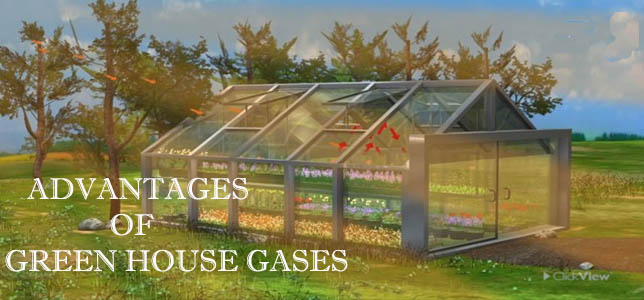Table of Contents
ToggleWhat are Green House Gases?
Green House gas is the Ozone-depleting which has the property of retaining infrared radiation transmitted from Earth’s surface and reradiating it back to Earth’s surface, along with these releases adding to the greenhouse effect impact. Carbon dioxide, methane, and water vapor are the most significant ozone harming substances. (To a lesser degree, surface-level ozone, nitrous oxides, and fluorinated gases additionally trap infrared radiation.) Greenhouse gases profoundly affect the vital energy of Earth history in spite of making up just a small amount of atmospheric gases. concentrations of ozone harming substances have fluctuated generously during Earth’s history, and these varieties have driven considerable atmosphere changes at a wide scope of timescales. By and large, ozone harming greenhouse gases fixations have been especially high during warm periods and low during cold periods.
Main gases responsible for the greenhouse effect
- Methane
- Carbon dioxide
- Water vapor
- Nitrous oxide
- Ozone
- Chlorodifluoromethane (CHClF2)
- Dichlorodifluoromethane (CCl2F2) (Freon-12)
- Tetrafluoromethane (CF4)
- Hexafluoroethane
Some of the Benefits of Green House Gases:
- Green House Gases as Barrier-Filter
The ozone harming greenhouse gases causing the primary impact to fill in as a boundary channel for the air. The sun emanates sun-oriented vitality on the earth and depletion ensures that 45% of these hurtful sunlight-based radiations don’t arrive at the outside of the planet by bobbing back the greater part of the harming UV radiation once more into space.
- Ozone-depleting substances Maintain Ideal Temperature:
Ozone-depleting substances help keep up a perfect liveable temperature on the earth’s surface. The Earth is liveable because of the way that the temperature level on Earth is kept up at a perfect level. This makes it feasible for people, plants, creatures and different life forms to flourish. It is because of these gases that the Earth is warm enough to accomplish this perfect temperature. Without them, the Earth’s surface would have wound up being much cooler than its present temperature.
- Greenhouse gases and Ozone
Ozone is one of the most vital Greenhouse gases. It is additionally the main gas that can anticipate harmful bright (UV) beams from entering the Earth’s climate. Without the Ozone layer, UV beams could undoubtedly reach the surface and cause across the board harm, including different skin ailments.
- Greenhouse gases maintain Water Level
Greenhouse gases help to maintain the impact that the Earth’s temperature can keep up the water levels that exist superficially. The planet has not liquefied totally because of the moderate temperature that exists on it. The polar ice tops stay confined to simply the two polar regions of the Earth.
- Horticulture and Greenhouse Gases
The greenhouse effect impact has empowered human agriculture practices to overcome the obtundation of the atmosphere.
Greenhouse gases enable farmers to develop occasional harvests at whatever point they need to.
Greenhouse gases with the differences in temperatures artificially make whichever season the farmer wants to choose and chooses.
- Helping the water to become heat.
Solar-powered water heaters utilize the greenhouse effect to heat water. This adds to energy-saving and can set aside to 20-30 percent of the household energy bill.
- The Greenhouse Effect Supports Photosynthesis
Photosynthesis is the regular procedure through which plants make their own food. Without CO2, water, and daylight, there would be no photosynthesis. Plants convert CO2, water, and daylight from the air into the atmosphere into useful organic compounds that help development. Therefore, people and creatures get food for survival.
- Result in increased Food Production
The greenhouse effect results in increased amounts of carbon dioxide in the air. A survey of existing writing demonstrates that higher CO2 levels cause plants to grow quickly. Also, such plants will grow greater than those developing under conditions with lower CO2 levels.
Moreover, such crops may develop quicker than originally, they do. Accordingly, farmers would see expanded yields which may convert into improved returns. Experts anticipate that if the present levels of environmental CO2 multiplied, the world would almost certainly observe up to 32% expansion in agricultural yields.
- Lead to Increased Rainfall Amount
Foreseeing how global warming is changing influence local weather and climate examples may be difficult. In any case, it is sensible to expect extreme climatic changes in the future.
The nursery impact makes temperatures rise. Higher temperatures in some cases mean more rainfall across various regions. While a lot of rainfall may demolish crops in the fields, improved rains for the most part lead to higher agricultural productivity.
- Increases Ability of Plants
Water is among the most basic component of the production of agriculture. Raise of a greenhouse effect deviation would make water a much more basic factor for cultivating.
Studies find that raised CO2 focuses may cause plant leaf stomates to close somewhat partly. Accordingly, plants may experience improved protection from relative water loss. Also, transpiration rates may reduce. In addition, plants in states of raised CO2 will in general use water more productively than they ordinarily do. Raised CO2 levels may give plants greater protection from dry season and different stresses identified with water.











